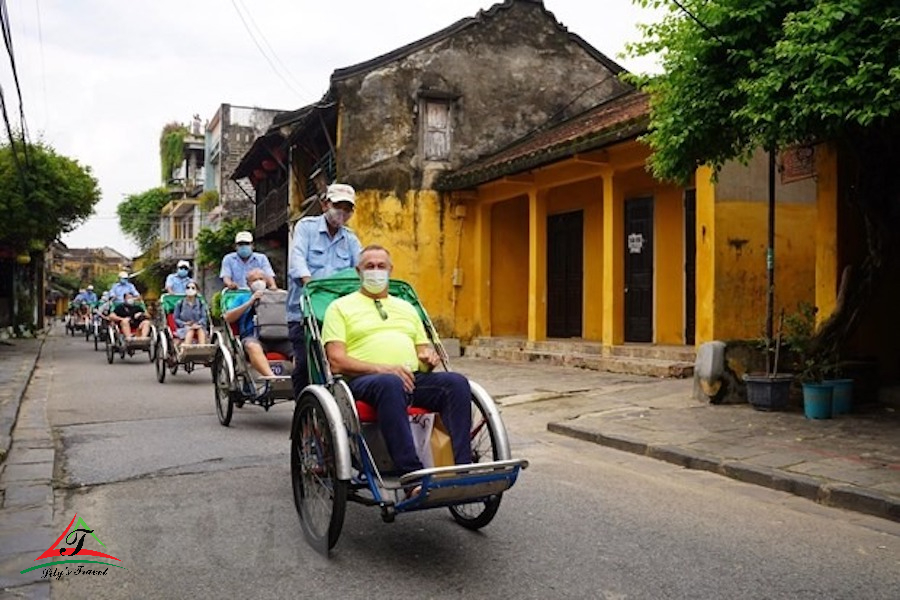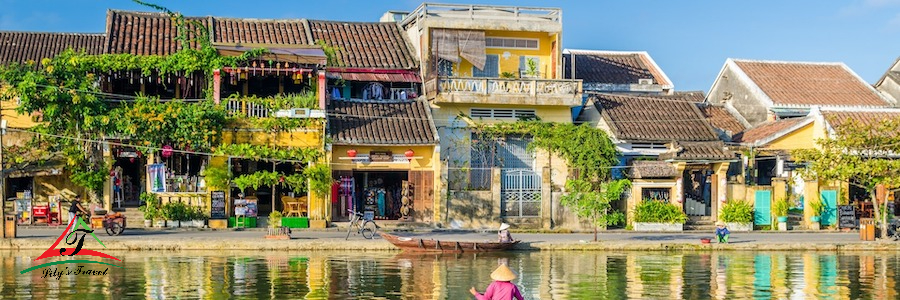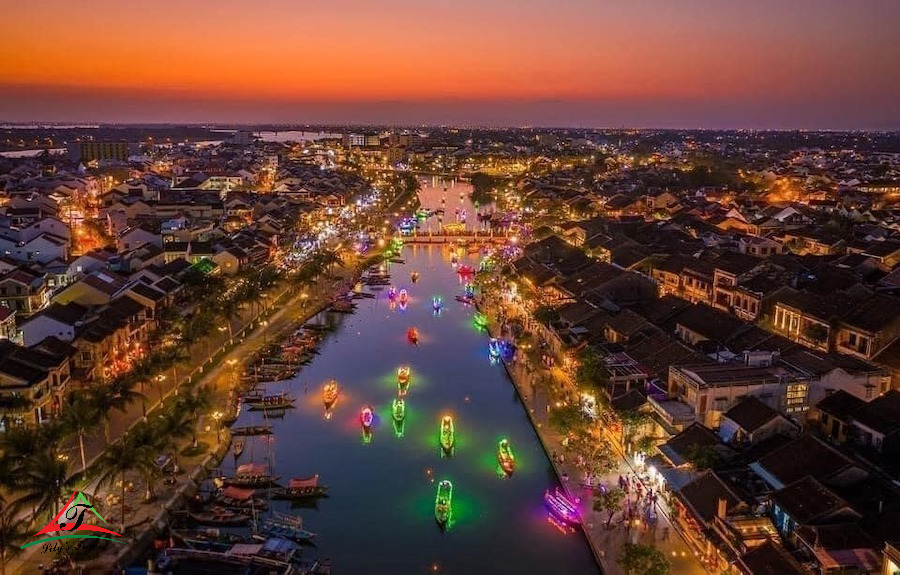
Entering Hoi An ancient town, visitors can deeply feel the diverse mix, full of art by the typical architectural works of Japanese, Chinese, Vietnamese and French cultures. As one of the two destinations chosen by Quang Nam province to pilot to welcome international tourists, after nearly 2 years of silence because of the COVID-19 epidemic, Hoi An ancient town these days is full of vitality and excitement to welcome international visitors to this Asia’s leading cultural and tourism urban destination.
Located on the banks of the poetic Hoai River, 30km from Da Nang city, Hoi An ancient town has been a famous and attractive destination for domestic and international tourists for many years. The flow of time has covered Hoi An with tranquil beauty, despite history’s various ups and downs.
In contrast to modern urban areas, Hoi An impresses visitors with mossy roofed houses, ancient yellow painted walls, and lanterns that make up the Hoi An brand. Founded and developed in the 16th century, Hoi An has been one of the busiest international ports in the region. T
The period from the 16th century is when the goods of traders from China, Japan, the Netherlands, India, Spain… Therefore, the architectural works and cultural values of Hoi An ancient spectrum converged from many East-West cultures.
Hoi An old town known for its classic Southeast Asian trading port architecture that has been almost completely maintained. Hoi The architecture, religion, beliefs, and cultural values of a historic town are the most striking evidence of its birth, development, and even decline.

It possesses a system of 1,360 relics, including 1,068 ancient houses, 11 old wells, 38 clan churches, 19 temples, 43 shrines, 23 communal houses, 44 unique tombs, and one ancient bridge. Stepping into this lovely old town, we are struck by the diversified, artistic, and ancient combination of near rows of houses with architectural traits from several countries.
Walking in Hoi An, visitors will have the opportunity to visit temples dating back hundreds of years, such as Cau Pagoda, Phuoc Lam Pagoda, and Van Duc Pagoda, and admire the constructions of Chinese assembly halls and shrines with Sophisticated, colorful architecture. Located next to it are the roofs that record Vietnamese traditions and houses with ancient French style.
Hoi An is not only a living museum of architectural works, but it also has cultural worth. A historic town is surrounded by a rich and diversified intangible culture. Experiencing many fluctuations of the times, but the daily life of the people of Hoi An still retains the original beauty and away from everything.
The streets are built like a chessboard, winding along the riverside and embracing the houses. On each corner of that peace, visitors quickly encounter street vendors with famous dishes such as high-rise Quang noodles, bread, chicken rice… or shops selling handicrafts. It reflects the people here’s a simple, slow, and peaceful life.
The people keep and preserve the customs, living habits, beliefs, folk arts, and cultural festivals. At night, life in the old town is still full of vitality and nostalgia for ancient times, with the singing of the hut song, the sound of drilling cries echoing on the Doai River.

In particular, if you come to Hoi An on the 14th day of the monthly lunar calendar, you will be immersed in the lantern festival, making the old town seem to become brighter and shimmering than usual in the bright red, soft yellow… radiating from the lanterns from all the beautiful alleys.
From a distance, the old town is immersed in a fanciful space with thousands of lanterns along the streets, houses, and river sides. Another exciting experience worth trying when coming to Hoi An is releasing lanterns. From Bach Dang wharf, small boats gently float along the poetic Hoai river; visitors enjoy the old town landscape at night, feel the cool air in the wind, listen to the fascinating stories of Hoi An, and hand drop the fanciful lanterns.
Read more: Popular places to visit in Vietnam: 5 places has been in the top destinations in the world
According to the concept of local people, dropping flower lights is like dropping worries and troubles and bringing a sense of peace and happiness. Besides, the slow pace in the small streets to see the ancient houses, enjoy the specialties of Hoi An or visit the stalls selling handicrafts from the famous craft villages of Quang Land is also an excellent experience for visitors.

In the development of modern life, traditional craft villages are still being preserved and developed by the people here, such as Kim Bong carpentry village, Tra Que Vegetables, and Thanh Ha Ceramics. The work has been associated with so many generations, feeds so many people, and is the pride of everyone here.
Today, this is also a place to preserve the cultural values of Hoi An ancient town, and attract tourists to visit to understand more about the traditional industries of the nation. The images of spinning, silkworms, looms; the silhouette of women’s villages, carriages, needle threads… in the space of the old hometown silk funeral at the Hoi An Folk Culture Museum or in the premises of Hoi An Silk Village Company are also new features worth exploring in the trip to the old town in recent years.
The best center Vietnam tour: Tour in Vietnam















